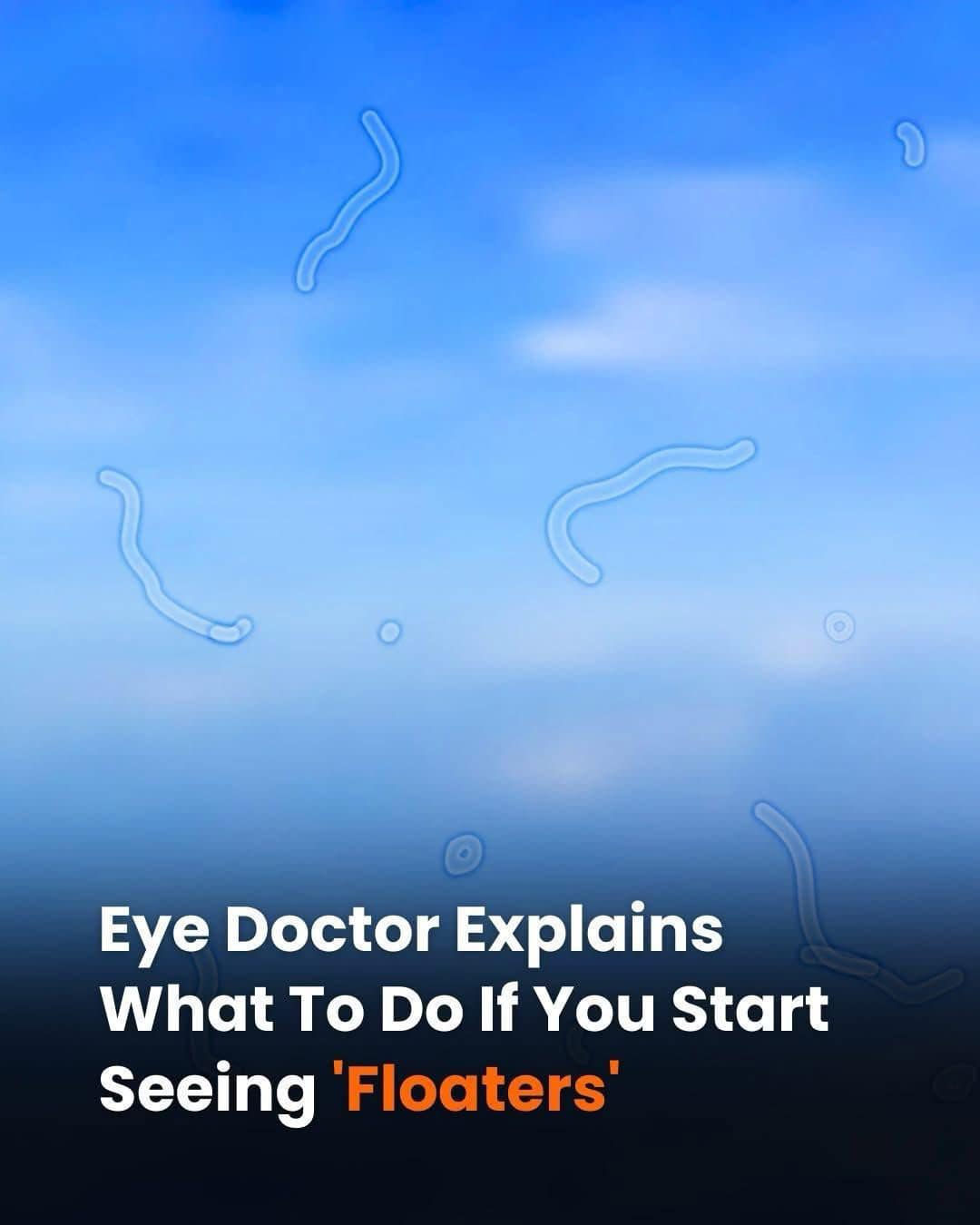Ever noticed tiny squiggly lines, specks, or cobweb-like shapes drifting across your vision—especially when staring at a bright sky or a blank wall? If so, you’re not alone. These are called eye floaters, and while they can be a little unsettling, they’re usually harmless. Still, it’s important to know when to brush them off and when to call your eye doctor.

Here’s what eye experts want you to know about floaters, what causes them, and what to do if they suddenly show up.
What Are Eye Floaters?
Eye floaters are small, shadowy shapes that seem to float across your field of vision. You might notice them more when you’re looking at something bright, like a white background or a sunny sky. These little shapes—spots, strings, or squiggles—move when your eyes move, often darting away when you try to focus on them directly.
According to eye specialists, floaters are usually not a big deal. Most of the time, they’re just a natural part of how our eyes age. But in some cases, they can point to something more serious going on inside the eye.
What Causes Eye Floaters?
Inside your eye is a clear, gel-like substance called the vitreous. As you get older, this gel starts to break down and become more liquid. Tiny fibers in the vitreous can clump together, casting shadows on your retina. Those shadows are what we perceive as floaters.
While age is the most common cause, other health conditions can also lead to floaters. These include:
-
Eye infections
-
Uveitis (inflammation inside the eye)
-
Retinal tears or detachments
Any of these should be taken seriously, so don’t hesitate to get checked if floaters suddenly appear or change.
Who’s More Likely to Get Eye Floaters?
Some people are more prone to floaters than others. You might be at greater risk if you:
-
Are nearsighted
-
Have had cataract surgery
-
Have diabetes (which can lead to diabetic retinopathy)
-
Are over the age of 50
These factors can make changes in the vitreous more likely, increasing the chances of floaters appearing.
Symptoms That Shouldn’t Be Ignored
Although floaters are usually harmless, they can sometimes signal a medical emergency. If you notice:
-
A sudden spike in the number of floaters
-
Flashes of light
-
A dark shadow or “curtain” drifting across your vision
…you could be dealing with a retinal tear or detachment. These are serious and require immediate medical attention to prevent permanent vision loss.
How Are Eye Floaters Diagnosed?
If you’re concerned about floaters, an eye doctor will typically perform a dilated eye exam. This means your pupils are widened with eye drops so the doctor can get a better look at your vitreous and retina. They’ll check for any abnormalities or signs of damage, like tears or detachments.
It’s a painless and relatively quick procedure, but it gives the doctor a full view of what’s happening inside your eye.
When Do Floaters Become a Medical Emergency?
Not every floater is a problem—but certain symptoms can be red flags. Seek immediate help if you experience:
-
A sudden increase in floaters
-
Bright flashes of light
-
A dark shadow moving through your peripheral vision
These signs could indicate a retinal tear or detachment, and time is critical in treating them.
Can Eye Floaters Be Treated?
In most cases, treatment isn’t necessary. Floaters often become less noticeable as your brain learns to ignore them. But if they start to interfere with your daily life or vision, there are options:
1. Vitrectomy
This is a surgical procedure where the eye’s vitreous gel is removed and replaced with a saline solution. It can eliminate floaters but comes with risks like infection or retinal damage.
2. Laser Therapy
A less invasive option, this procedure uses lasers to break apart floaters, making them less visible. However, it also carries risks and isn’t suitable for everyone.
Because of potential complications, both treatments are usually reserved for severe cases.
Lifestyle Tips for Managing Mild Floaters
If your floaters aren’t too bothersome, there are simple ways to manage them:
-
Eye Exercises: Moving your eyes up and down or side to side can sometimes shift floaters out of your direct line of vision.
-
Healthy Diet: Foods rich in omega-3 fatty acids, vitamin A, and zinc can support long-term eye health.
-
Avoid Smoking: Smoking can worsen eye problems and increase the risk of vision-related diseases.
Prevention and the Long-Term Outlook
Eye floaters are often a normal part of aging, but that doesn’t mean you should ignore them altogether. Regular eye checkups—especially if you’re at higher risk—can help catch issues before they become serious.
Dr. Rick Ansorge, a seasoned eye specialist, stresses the importance of paying attention to your vision:
“If you notice sudden changes—more floaters, flashes of light, or anything unusual—don’t wait. Get checked out right away.”
While floaters may be annoying, most of them are harmless. Still, knowing what to look out for and staying proactive about your eye health can help you keep your vision strong for years to come.





